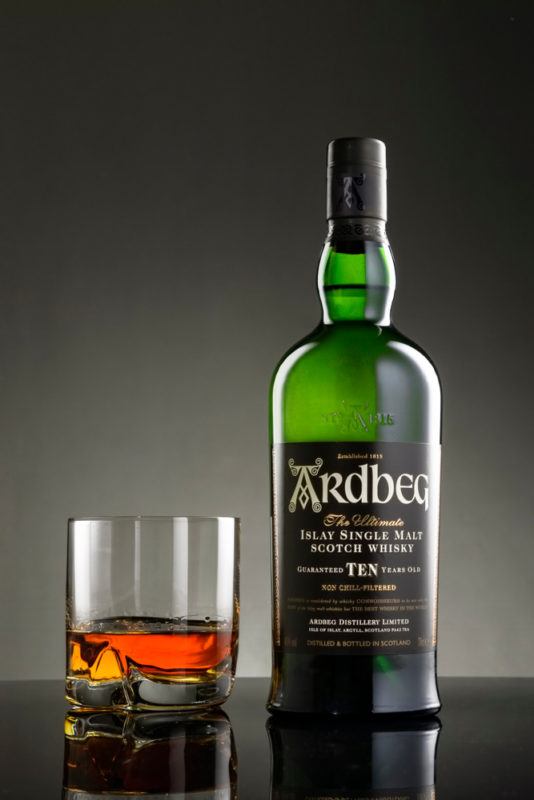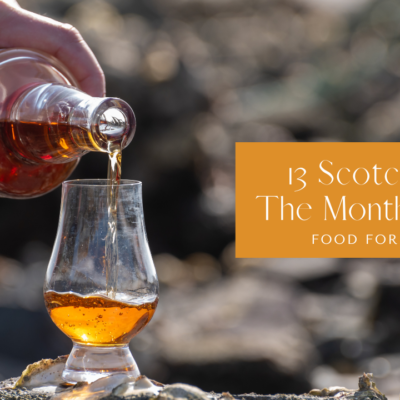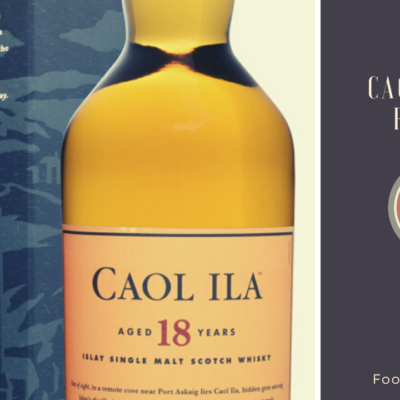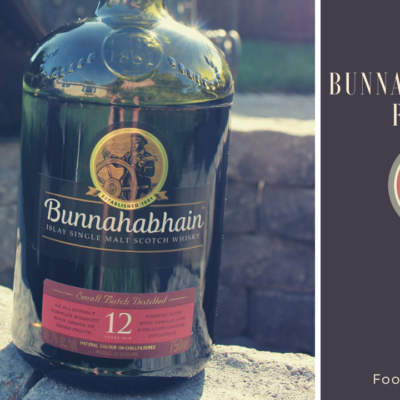If you’re looking for an affordable but quality Islay whisky, then you will be hard pressed to find a single malt that offers as much value as Ardbeg 10. The whisky itself is the product of the Ardbeg Distillery which is actually owned by a much more famous whisky distillery after having a rough time of things over the years.
In this Ardbeg 10 review, we will delve into the history of the Ardbeg distillery and find out what makes Ardbeg 10 such a great value whisky.
Ardbeg 10 Review
About the Ardbeg Distillery

The Ardbeg distillery is one of the oldest distilleries on Islay with whisky-making beginning in 1798 and commercial production of whisky being underway by 1815. 1815 is around the time that big distilleries like Laphroaig and Lagavulin were just starting and Ardbeg was already well established as a distillery by this point.
Historically, Ardbeg produced whisky to be used in blends rather than the single malts that they are famous for today. This is primarily because there was less risk involved producing whisky to go into blends than going it alone and trying to build a brand from scratch in a very competitive field.
Ardbeg was very successful, to begin with, and by the 1880s it was producing a large quantity of whisky (around 300,000 gallons a year) and the distillery was a big local employer.
In the early 1900s, Ardbeg had grown to be a reputable brand and distillery in their own right and it was then that they started to move away from producing whiskies exclusively for blends and experimented with their own single malts. As a result, they registered the Ardbeg name as a trademark in 1911.
Over the 20th century, Ardbeg went from reputable whisky producer to complete failure and then like a phoenix from the peat-smoked ashes, they rose once more to the more prominent role they have today.

There was a time, due to fierce competition and distillery mismanagement, when production at Ardbeg ground to a shuddering halt and in 1981, they produced no whisky – a far cry from the 1.1 million liters they were producing almost a century earlier.
In 1997, the famous Glenmorangie company bought the Ardbeg distillery and within a year of the acquisition, the resurgent Ardbeg was voted the distillery of the year. By 1999, the production had been ramped up significantly with 120 gallons of whisky being produced (still a long way from their previous 300,000 gallons) and by the early 2000s they were winning awards.
Glenmorangie was bought out by the French company Louis Vuitton Moet and in turn Ardbeg changed ownership, although in practice the Glenmorangie infrastructure still remains, and the acquisition is really in name only.
Today, Ardbeg works on ground-breaking space-related and technology projects as well as crafting their delicious single malts, of which the Ardbeg 10 is the most accessible.
Ardbeg 10 Review

Ardbeg’s processes have changed considerably over the years and one of the things that makes this distillery stand out from other Islay whiskies is how different the peat character of their whisky is. In the past, Ardbeg was aggressively peaty and smoky and during the years of its peak production, Ardbeg was easily one of the smokiest whiskies on Islay. Then, leaner times hit, and financial hardship brought in a range of budget cuts and cost-saving practices.
Among these were a shorter peat smoking process and much less peat being used. Ardbeg during the 70s began to decline in both quality and taste and this led to its eventual decline and close of operation in 1981.
When the Glenmorangie distillery took over, they increased the peat levels and also experimented with even higher peat levels with one whisky, the Ardbeg Supernova being twice as strong in peat than typical Islay whiskies. Today the Ardbeg whiskies are smoky (including the Ardbeg 10) but they are not a typical smokiness, it is evident that the peat smoking process has been refined a lot over the years.
Ardbeg is in direct competition with Lagavulin and Laphroaig to create the most intense whisky and the Ardbeg 10 is certainly a strong competitor due to its short maturation age and less smokiness being lost from the barrels. Ardbeg 10 surprisingly, is a very different whisky to its competitors and you can distinguish it from the other two easily with taste.
So, how does it taste?
Tasting Notes
Ardbeg 10 is free from artificial coloring and has a pale but golden straw-like coloring.
- Mostly sweet with no bitterness
- Full-bodied and rich
- Maltiness on the finish
Flavors: Spices, licorice, burnt oak, smoke, malt
On the nose, it has a dominant peat smoke smell that is characteristic of south Islay whiskies, but Ardbeg’s dissipates rather quickly and isn’t as full-on. Behind the smoke, there is a citrus fruit sweetness as well as an unmistakable nail-varnish like smell from the high 46% ABV content. It is also a non-chill-filtered whisky allowing it to retain a lot more intensity in flavor and aroma.
The fruitiness grows deeper the longer you let the whisky sit in the glass.
To taste, it is a strong peaty whisky with plenty of heady sweet notes to round off the initial flavor. The smokiness is ever-present but not over-powering and the sweetness builds with the taste. Spices like cilantro rest on the tip of your tongue and are complemented by an anise/licorice quality behind. It has a slight oil taste as well.
The finish is a bit drier and very long, with hints of the oak shining through as well as a nice fruit and malty flavor. It has a bitterness right at the end.
Diluting Ardbeg doesn’t do much, except it waters down the very good existing flavors. The smokiness remains either way, but the other flavors drop off slightly making it less sweet and not as full-bodied as before. Ardbeg 10 doesn’t pop as much when it has been diluted.
Pros and Cons of Ardbeg 10
Ardbeg 10 is an interesting whisky because it has so many layers to it. When drinking it, you get an instant first impression but as the drinking develops, you find yourself discovering new flavors and hidden rabbit holes to dive down.
In this respect, Ardbeg 10 is without a doubt one of the best whiskies for a cold night in front of the fire with a good book. It provokes thoughts and is extrasensory with a deep nose and flavor. It is also much cheaper than most Islay whiskies despite its awards.
On the flip side, it also has the drawback of being an Islay whisky which some whisky drinkers don’t like because of the smoky flavors.
Pros of Ardbeg 10
- Great value.
- Really interesting whisky that will have your mind working out whisky puzzles.
- For Islay lovers, Ardbeg will be without doubt a firm favorite.
Cons of Ardbeg 10
- Not as enjoyable to taste as the Lagavulin 16.
- It has a high alcohol content which some dislike.
- It doesn’t pair well or play with others. Ardbeg 10 is without question best enjoyed on its own.
You Might Also Like…
If you enjoyed the Ardbeg 10 there are a few really good whiskies to sample next.
These are;
Lagavulin 8 – A simple and young Islay whisky that shares a few flavor components with Ardbeg 10.
Ardbeg Uigeadail – A less smoky Ardbeg with plenty of flavor development of the tastes that appear in the Ardbeg 10.
Lagavulin 16 – A more palatable whisky that is easily paired and has the same qualities as Ardbeg 10 without the long finish.
Laphroaig 10 – A strong smoky punch that is similar to Ardbeg 10 but has a more medicinal and rounded quality.
The Ardbeg 10 Verdict

The Ardbeg 10 is a difficult whisky to place in front of a beginner because it is so strong. Equally, it is not a whisky that experts will flock to because other heavily peated whiskies are better to drink.
Fortunately for Ardbeg, the general market falls somewhere between these two extremes and for the most part (at least if sales are to go by) Ardbeg is very successful. It is a good whisky with great value, but it should lead you onto other whiskies. It would be a shame to recommend Ardbeg 10 and that be the place where you settled as there are other better whiskies and Ardbeg make a few themselves!

















 Traditional Mexican Breakfast Foods That Will Expand Your Horizons
Traditional Mexican Breakfast Foods That Will Expand Your Horizons
Leave a Reply